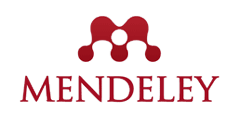About JPPAK Aim and Scope Publication Ethics Journal Submission Journal Archive Journal Announcement Author Privacy Author Fee Copyright and Permissions Journal License Archiving Policy Open Access Policy Peer Review Process Publication Frequency Regarding Plagiarism Repository Policy
Peer Review Process
Each paper will be filtered through Initial Review by an assigned editor. The initial review consists of plagiarism check; consistency check of the paper to the aim and purpose of the journal; and conformity check of the paper with the journal tempate. Manuscript that does not match the criteria will be rejected. Manuscript that matches the criteria will be sent for review following the Double-Blind Peer Review Process principle.
Reviewer examines the quality and substance of the paper, which includes the freshness, originality, impact potential, validity and authority of citations and references. Reviewer receives the file with neither identity nor the profile of the author(s). If the reviewer find out that the paper is not within their competencies, he/she is entitled to reject the task. Otherwise, the reviewer will make his/her review and send back the results. The first review should not exceed a month. After receiving the feedback from the reviewer, the paper will be returned to the authors to be revised. The paper can be revised several times if needed. The whole reviewing process should not exceed three months.
In each manuscript, peer reviewer evaluates the substantial and technical aspects. Peer reviewers of Jurnal Penelitian Pendidikan Agama Katolik (JPPAK) are experts in Catholic Education Research and issues around it. They were experienced in online journal management and publication.
At the end of the reviewing process, the reviewers may make a recommendation whether to reject, to ask for further revision, or to accept the article. The editorial board has the final decision. The authors will receive the confirmation of the decision.
Concise Review Process:
- Author submit the manuscript
- Editor Evaluation (some manuscript are rejected or returned before the review process)
- Blind peer review
- Editor Decision
- Confirmation to the author
A review form below can be used as means.
Review Form
- This form is after all means to meet the purpose. It cannot substitute the actual review.
- Profound and detail review is necessary.
Please answer with: Yes/Partly/No
Is the title appropriate?
Does the title indicate the core of the research (Is it versatile, informative, specific and effective enough to represent the whole paper?)?
Is the absract distinct, concise and at the same time enough to indicate the essence of the article?
Does the abstract consist of at least: aim and purpose, concise illustration regarding the methods and important finding(s) of the research?
Do the keywords represent the basic and important ideas?
Does the paper fulfill the scope of the Journal, which is Catholic religion education?
Does the paper have novelty (can be regarding the research object, approach, method and finding)?
Is there a sufficient explanation of the research method?
Is the research process systematically elaborated?
Does the research result or finding fulfill the productive research criteria (will it bring positive impact towards development of science and problem solving)?
Does the paper have valid and authoritative primary references?
Does the secondary references exceed 50% of the primary ones?
Are the references from the last 10 years (not include the Bible, classic Church documents or still relevant philosophical and theological treatises)?
Do the analysis and synthesis succeed in correcting or confirming the precedent theses?
Is the conclusion sufficiently distinct, accurate and profound?
Does the conclusion consist of new findings, can be: theories, formulas, postulates, methods, principles, prototypes or their equivalents.
Is the conclusion accountable with enough valid data?
In the discussion, are there sufficient argument and summary for the findings and recommendation for further studies?
Does the research result have heavy ethical or moral consequences which requires nihil obstat from the Magisterium of the Church?
Publication Process (From Submission to Publication)
- Paper submission.
- Initial evaluation from the Section Editor: plagiarism check, consistency with the author guideline and journal template.
- Editorial decision: to reject the paper, to send it back for revision, or to approve it for reviewing process.
- Approved paper will be forwarded to reviewers following the double-blinded norm.
- Each reviewing result will be forwarded to the author(s) for revision.
- The revised paper will be sent back to the reviewers.
- Further revising if needed. At the end the reviewers will give a recommendation. The whole reviewing process until recommendation should not exceed 3 (three) months.
- Based on the recommendation, the editorial board will make an editorial decision: to reject or to approve.
- Approved paper will be forwarded for proofreading.
- From proofreader to Editor-in-Chief.
- The final file approved by the Editor-in-Chief Editor will be forwarded to Design Lay-out Editor.
- Confirmation to the author(s) and publication.











